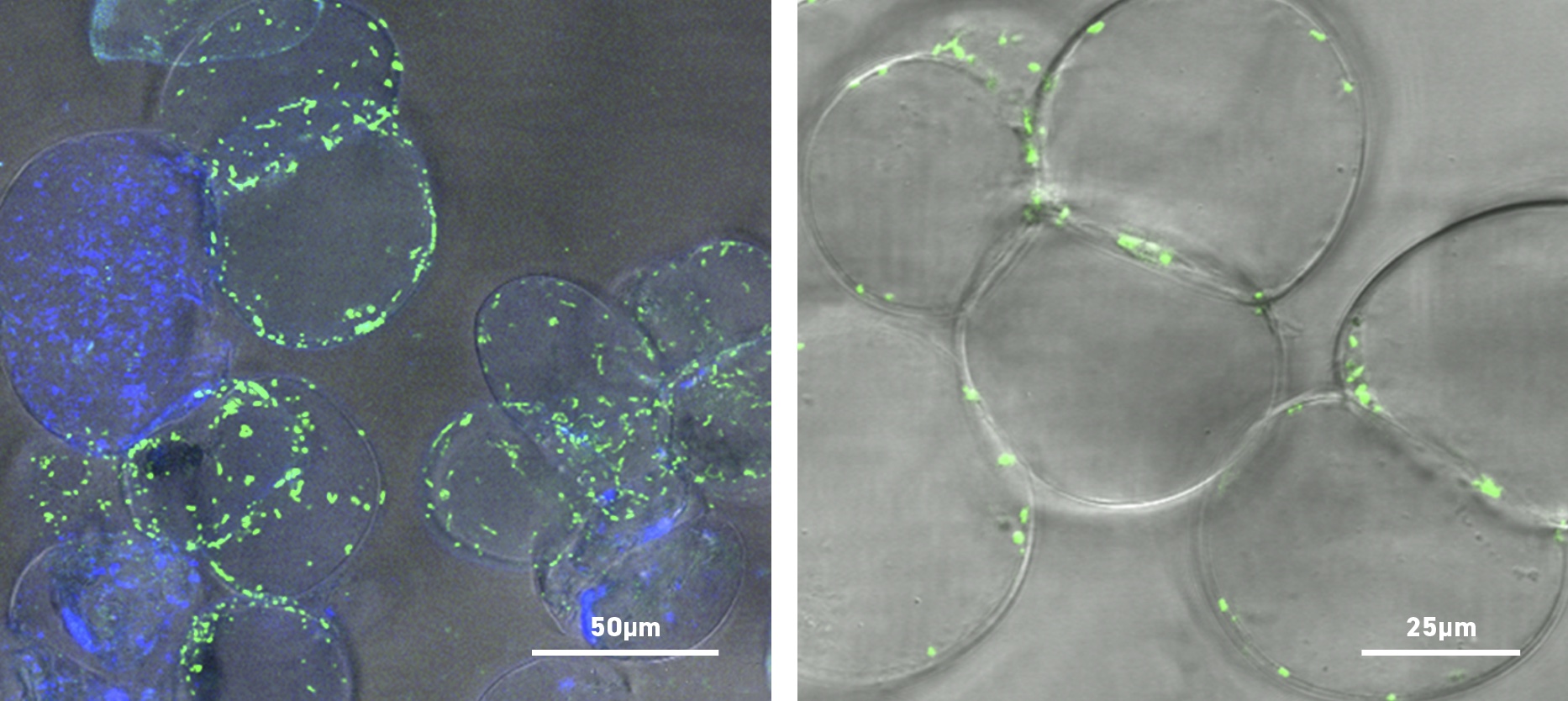Microbes mainly colonise roots and have long been seen living in between the plant cells. Now, this new study shows that a huge diversity of bacteria are also living happily inside these plant cells and contribute to normal plant cell metabolic functions. Researchers have named them ‘Cytobacts’.

Confocal images of green fluorescently labelled bacteria inside plant cells.
The long-term study that led to these findings started ten years ago when Dr Pious Thomas, then from the Indian Institute of Horticultural Research, visited the lab of Prof. Chris Franco at Flinders University. Using a combination of molecular biology, and microscopy techniques at the Microscopy Australia facility at Flinders University, the pair looked at many different plant species. To confirm that the bacteria were not introduced by contamination, they tested plants that had been growing in the lab for years, as well as newly established lab stocks and fresh tissue from plants growing in the field. In all cases they showed the presence of multiple bacteria inside the plant cells. For example, 40-year-old grape vine cells revealed more than 250 types of bacteria, all of which are either extremely difficult or impossible to grow independently of the plant cells.
“Potentially [cytobacts] are involved in some of the integral functions of plants, such as energy metabolism, or as an inducer of defence responses against other microorganisms” Prof. Franco says.
P. Thomas & C. M. M. Franco, Microorganisms 2021
DOI: 10.3390/microorganisms9020269
February 18, 2022